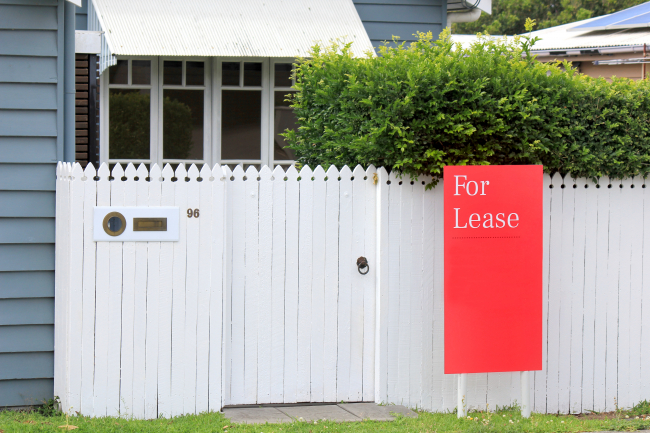BLOG
From One Mixed-Use Property into Multiple Short-Term Rentals, using Section 1031

Many investors are aware of the value of Section 1031 exchanges in their real estate portfolios. These investors use 1031 exchange to reposition their investments to other neighborhoods or other states, or to reallocate their investments to different asset classes.
The Situation
Andrea currently owns a mixed-use building with 5 residential units above a retail storefront. The property also has ample off-street parking on a 1½ acre lot and is situated near a busy commuter road. Nonetheless, her income from the property is limited due to the market rate for this type of property in her community. Andrea acquired the property about ten years ago for $500,000. A developer is interested in the converting the property into a convenience store and gas station, and has offered Andrea $700,000, which she is considering accepting.
The Problem
Andrea has grown disillusioned with the property because her state imposes stricter regulations on properties with five units or more, as well as the limited cash flow potential. She had been considering selling the property anyway, but her accountant has just told her that she will have a sizeable tax bill if she sells outright. In round numbers, Andrea can expect to pay taxes as follows:
| The gradual reduction in value of an asset over time. The IRS requires investors to depreciate real estate (and certain other assets) over a specified period of time. Residential real estate uses a 27.5 year schedule, and commercial real estate uses a 39 year schedule. Depreciation recapture tax | ($128,000 x 25%) | $32,000 |
| Capital gains tax | ($200,000 x 20%) | $40,000 |
| Estimated state capital gains tax | $26,240 | |
| Affordable Care Act tax | ($328,000 x 3.8%) | $12,464 |
| Total estimated tax owed | $110,704 |
Selling the property outright would net Andrea approximately $589,000 after the taxes. While Andrea wants to get away from the burdensome restrictions imposed on her by the state, and the developer’s offer is tempting, the prospect of losing nearly 16% of the sale price to taxes is less palatable than dealing with the state rules and regulations and limited cash flow.
The Solution: A 1031 Exchange into Multiple Short-term Rental Properties
Andrea will structure the sale of the building as part of a Section 1031 Like-Kind Exchange. After consulting with her attorney and a Qualified A person acting to facilitate an exchange under section 1031 and the regulations. This person may not be the taxpayer or a disqualified person. Section 1.1031(k)-1(g)(4)(iii) requires that, for an intermediary to be a qualified intermediary, the intermediary must enter into a written "exchange" agreement with the taxpayer and, as required by the exchange agreement, acquire the relinquished property from the taxpayer, transfer the relinquished property, acquire the replacement property, and transfer the replacement property to the taxpayer. Intermediary (“QI”) like Accruit, Andrea now understands that “like-kind” does not require her to replace the old property with a multi-family or mixed-use property.
Upon the sale of the mixed-use property, the exchange proceeds were sent directly to Andrea’s QI to be held on her behalf until the purchase of her replacement property. This is necessary because a person doing an exchange cannot come in actual or constructive receipt of the net sale proceeds while the exchange is pending.
Within 45 days after the closing on the sale, Andrea properly identified five furnished rental condos for approximately $150,000, for a total investment of $750,000. (Learn more about Identification rules in 1031 exchanges.) Closings on the various condos occurred over the next several months, well within 180 days of the sale of the relinquished property, utilizing the exchange proceeds held by the QI. After closing, each of the properties will be listed as short-term rentals on Airbnb, VRBO, or similar services. Andrea has now shifted her equity to multiple properties with significantly higher cash flow potential, without recognizing the gains.
Technically speaking, the furniture in the condos could be considered “boot” as it is not real estate. However, the furniture is used, and has been assigned a value of less than $10,000 in each of the units, for an aggregate value of less than $50,000. Since she will be selling the old property for $700,000, and the value of the new properties is $700,000, she will not be facing any taxable boot issues. Andrea will now be free of the more stringent rules imposed on properties greater than four units, and has prospects of better cash flow as well. Andrea structured the sale of the old property as part of a Section 1031 tax-deferred exchange, and has exchanged into replacement properties of equal value, to fully benefit from Section 1031.
The Result
Andrea has successfully completed a 1031 exchange from one mixed-use multi-family relinquished property into multiple replacement properties. She exchanged equal or up in value, using all of her equity, fully deferring the anticipated capital gains and depreciation recapture taxes. Andrea has now escaped the onerous burdens imposed by her state on owners of properties with more than four units, and is anticipating better cash flow as well.
Review the basics of Forward Exchange, which you may review with your tax and legal advisors.

